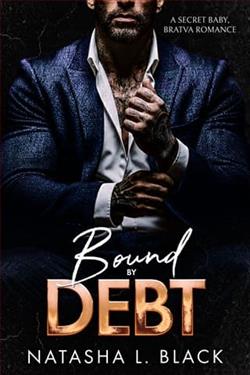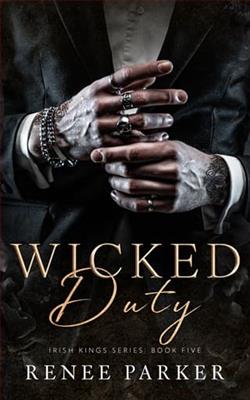Page 71 of Whispers of Redemption
“But if looting pays so much more, why would Olga switch from looting to stolen artwork?” Wade asked.
“We can only suspect why,” Zack said. “Part of the reason may be that in the past few years, we’ve developed tougher laws around looted goods. So the market for selling them in the U.S. is drying up. And art dealers are looking much closer at the provenance of pieces.”
“What’s provenance?” Cassie asked.
Zack shifted his position on the chief’s desk, leaning forward to explain. “Provenance shows the record of ownership for a piece of art, from the time it was originally discovered until today. If a piece was smuggled out of its country of origin, there’s no legitimate way to show its provenance.”
“How did you figure out that Olga is dealing in stolen art now?” Wade asked.
“She fell back onto the FBI’s radar a few years ago, after a 1911 Picasso painting known as La Coiffeuse, or The Hairdresser, was stolen from a Paris museum. It was valued at fifteen million dollars.”
Wade let out a low whistle.
“The piece was identified by Newark, New Jersey immigration officials when it was on its way from Belgium to Queens in New York, where Olga Kozlovsky was living and working at that time. Even though it was addressed to an untraceable post office box, we believe it was shipped to her to repair some minor damages that occurred after it was stolen. Somehow though, she got wind that the painting had been discovered. She never came to claim it. And shortly afterward, Olga packed up and moved to Whispering Pines to establish her business here. Since then we’ve successfully gathered clear evidence showing that she’s a member of a highly sophisticated smuggling ring.
“How big is the ring?” Wade asked.
“Big. We’ve already identified most of the members, including complicit government officials and customs agents bribed to look the other way when shipments come in. Olga is a key player in the ring due to her unique mix of connections and her skill as an art restoration specialist.”
Wade leaned forward in his chair, looking thoughtful. “You mentioned that when these art smuggling rings deal in stolen goods, they only get a fraction of what a piece of the art is worth.”
“That’s right,” Zack said. “With looted artwork, pieces often go to auction at Sotheby’s or Christie’s, where the competition among buyers drives up the price. But that isn’t an option once an art theft has made headlines. Because the source of its value, its fame, also makes it impossible to sell for its full worth in any legitimate venue. Stolen art has to be sold on the black market, where sellers only get between seven and ten percent of the true value of a piece.”
Wade frowned. “So, we know from talking with you and Olga after the theft, that this painting Brett stole,” he indicated the painting propped against the window, “was only worth $60,000. Why would one of the country’s largest smuggling rings be involved in something that will only net them, what? $6,000 max?”
“Well,” said Chief Roland, “there’s more to this painting than initially meets the eye.”
“What do you mean?” Wade said.
Zack pushed away from the desk and walked over to pick up the painting from its position against the wall. “May I use your desk, chief?”
“Certainly,” he replied, rising and stepping to one side to give Zack space.
The simple box-like wooden frame of the artwork was ornate; a distinctive inner and outer molding ran around a rather flat central frieze. Zack laid the artwork on top of the desk and pulled open the gray box Cassie and Wade had seen him carry into the office when he’d arrived. He removed a pair of thin white rubber gloves and a small, silver screwdriver from the set of tools lining each side of the black velvet-clad case interior. He flipped the painting over and carefully bent up each of the metal pieces holding the backing in place. Using the same tool, he gently lifted up one corner of it and eased it out.
Cassie could see the back of the canvas painting beneath it. Everyone watched as Zack carefully lifted it out with gloved fingers.
Cassie frowned in confusion when she spotted the back of another canvas lying beneath the one Zack had removed. Apparently, there were two paintings inside the frame. The one that Zack now held had been hidden behind Madonna and Child with San Giovannino.
Carefully, Zack turned the hidden canvas around to face them.
Cassie gasped. It was The Concert.
“That’s the painting I saw pictures of on your desk!” she cried.
“Yes,” Zack looked embarrassed. “That was me being sloppy. I was only away from my desk for a moment, but I should never have left that photograph lying there.” He carefully laid The Concert down on top of the inverted frame where they could all easily see it.
“Cassie and I read about this painting,” Wade said, rising to look more closely at it.
“So, you know it’s from one of the biggest art heists in history,” Zack said.
Wade nodded. “The article said it was stolen in 1990 by a couple of thieves disguised as police officers. They tricked their way into Boston’s Isabella Steward Gardner Museum in the middle of the night.”
“That’s true,” Zack said. “And a mere eighty-one minutes later, they made off with thirteen works of art by artists such as Degas, Rembrandt, Manet, and this one by Vermeer, which is considered the most valuable painting ever stolen. It has an estimated value of—”
“$250 million dollars,” Wade and Cassie said in unison.
Zack looked surprised, but nodded. “So, as you can see, even considering the black market value, this piece could bring in a cool $25 million all by itself.”















